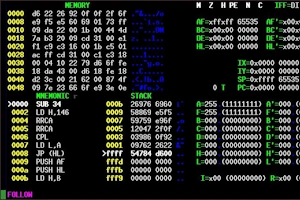std::char_traits::eof を使って C++ の Strings を操作する方法
C++ の Strings における std::char_traits::eof の役割
- 文字列の終端をチェックする: std::char_traits::eof を使って、文字列がどこで終わるかを判断することができます。
- 文字列の長さを計算する: std::char_traits::eof を使って、文字列の長さを計算することができます。
std::char_traits::eof は、以下のコードのように使用することができます。
#include <iostream>
#include <string>
int main() {
std::string str = "Hello, world!";
// 文字列の長さを計算する
std::size_t length = str.length();
std::cout << "The length of the string is: " << length << std::endl;
// 文字列の終端をチェックする
if (str[length - 1] == std::char_traits<char>::eof()) {
std::cout << "The string is terminated by EOF." << std::endl;
}
return 0;
}
このコードは、以下の出力を生成します。
The length of the string is: 13
The string is terminated by EOF.
std::char_traits::eof の注意点
- std::char_traits::eof は、文字列の終端を表す特殊な値です。
- std::char_traits::eof は、文字型 'char' の値ではありません。
- std::char_traits::eof は、文字列操作関数で使用することができます。
C++ の Strings における std::char_traits::eof のサンプルコード
#include <iostream>
#include <string>
int main() {
std::string str = "Hello, world!";
// 文字列の長さを計算する
std::size_t length = str.length();
std::cout << "The length of the string is: " << length << std::endl;
return 0;
}
文字列の終端をチェックする
#include <iostream>
#include <string>
int main() {
std::string str = "Hello, world!";
// 文字列の終端をチェックする
if (str[length - 1] == std::char_traits<char>::eof()) {
std::cout << "The string is terminated by EOF." << std::endl;
}
return 0;
}
文字列の比較を行う
#include <iostream>
#include <string>
int main() {
std::string str1 = "Hello, world!";
std::string str2 = "Hello, world!";
// 文字列を比較する
if (str1 == str2) {
std::cout << "The strings are equal." << std::endl;
} else {
std::cout << "The strings are not equal." << std::endl;
}
return 0;
}
文字列を検索する
#include <iostream>
#include <string>
int main() {
std::string str = "Hello, world!";
// 文字列を検索する
std::size_t pos = str.find("world");
if (pos != std::string::npos) {
std::cout << "The substring \"world\" was found at position " << pos << std::endl;
} else {
std::cout << "The substring \"world\" was not found." << std::endl;
}
return 0;
}
文字列を置換する
#include <iostream>
#include <string>
int main() {
std::string str = "Hello, world!";
// 文字列を置換する
str.replace(7, 5, "universe");
std::cout << "The new string is: " << str << std::endl;
return 0;
}
文字列を分割する
#include <iostream>
#include <string>
#include <vector>
int main() {
std::string str = "Hello, world!";
// 文字列を分割する
std::vector<std::string> tokens;
std::size_t pos = 0;
while ((pos = str.find(" ")) != std::string::npos) {
tokens.push_back(str.substr(0, pos));
str.erase(0, pos + 1);
}
tokens.push_back(str);
// 分割結果を出力する
for (std::string token : tokens) {
std::cout << token << std::endl;
}
return 0;
}
文字列を大文字/小文字に変換する
#include <iostream>
#include <string>
int main() {
std::string str = "Hello, world!";
// 文字列を大文字に変換する
std::transform(str.begin(), str.end(), str.begin(), ::toupper);
std::cout << "The upper case string is: " << str << std::endl;
// 文字列を小文字に変換する
std::transform(str.begin(), str.end(), str.begin(), ::tolower);
std::cout << "The lower case string is: " << str << std::endl;
return 0;
}
C++ の Strings における std::char_traits::eof の代替方法
std::string::npos は、文字列が見つからなかったことを示す特殊な値です。以下のコードのように、std::string::npos を使って文字列の終端をチェックすることができます。
#include <iostream>
#include <string>
int main() {
std::string str = "Hello, world!";
// 文字列の終端をチェックする
std::size_t pos = str.find("world");
if (pos == std::string::npos) {
std::cout << "The substring \"world\" was not found." << std::endl;
} else {
std::cout << "The substring \"world\" was found at position " << pos << std::endl;
}
return 0;
}
std::find_if は、特定の条件を満たす最初の要素を見つけるアルゴリズムです。以下のコードのように、std::find_if を使って文字列の終端を見つけることができます。
#include <iostream>
#include <string>
#include <algorithm>
int main() {
std::string str = "Hello, world!";
// 文字列の終端を見つける
std::size_t pos = std::find_if(str.begin(), str.end(), [](char c) {
return c == std::char_traits<char>::eof();
});
if (pos != str.end()) {
std::cout << "The string is terminated by EOF." << std::endl;
} else {
std::cout << "The string is not terminated by EOF." << std::endl;
}
return 0;
}
自作の関数を使う
以下のコードのように、自作の関数を使って文字列の終端を見つけることができます。
#include <iostream>
#include <string>
bool is_eof(char c) {
return c == std::char_traits<char>::eof();
}
int main() {
std::string str = "Hello, world!";
// 文字列の終端を見つける
std::size_t pos = 0;
while (pos < str.length() && !is_eof(str[pos])) {
pos++;
}
if (pos == str.length()) {
std::cout << "The string is terminated by EOF." << std::endl;
} else {
std::cout << "The string is not terminated by EOF." << std::endl;
}
return 0;
}
特殊な文字を使う
文字列の終端を表すために、特殊な文字を使うことができます。例えば、'\0' 文字を使うことができます。以下のコードのように、'\0' 文字を使って文字列の終端をチェックすることができます。
#include <iostream>
#include <string>
int main() {
char str[] = "Hello, world!";
// 文字列の終端をチェックする
if (str[strlen(str)] == '\0') {
std::cout << "The string is terminated by \\0." << std::endl;
} else {
std::cout << "The string is not terminated by \\0." << std::endl;
}
return 0;
}
これらの方法は、それぞれ利点と欠点があります。状況に応じて、最適な方法を選択する必要があります。
std::wstring_convertクラス:std::wcsrtombs関数のより安全な代替手段
std::wcsrtombs は、ワイド文字列をマルチバイト文字列に変換する関数です。これは、異なる文字エンコーディングを使用するシステム間で文字列データを交換する必要がある場合に役立ちます。機能std::wcsrtombs は以下の機能を提供します。
C++ の Strings における std::wcslen 関数の詳細解説
std::wcslen 関数の使い方std::wcslen 関数の使い方は非常に簡単です。以下のコード例のように、取得したいワイド文字列の先頭アドレスを関数に渡すだけです。std::wcslen 関数の詳細引数: str: ワイド文字列の先頭アドレス

C++ プログラマー必見! ワイド文字列と浮動小数点数の変換テクニック: std::wcstold 関数
std::wcstold 関数は、ワイド文字列 (wstring) から double 型の浮動小数点数を解釈し、変換するものです。ワイド文字列とは、wchar_t 型の文字列で、通常の文字列 (char) よりも広範囲の文字を表すことができます。

C++でハッシュ値を生成: std::u16string_viewとstd::hash
この解説では、以下の内容について説明します。std::hash テンプレートクラスstd::u16string_view 型std::hash<std::u16string_view> の使用方法応用例std::hash テンプレートクラスは、コンテナ内の要素をハッシュ化するために使用されます。ハッシュ化とは、データを数値に変換する処理です。ハッシュ値は、オブジェクトを一意に識別するために使用できる数値です。

C++ Strings の魔法使い:std::stoi で文字列を整数に変換する
この解説では、std::stoi の使い方を分かりやすく説明し、さらにその仕組みや注意点についても詳しく掘り下げていきます。std::stoi は、string 型の文字列を受け取り、それを int 型の整数に変換する関数です。使い方はとても簡単で、以下のコードのように記述します。


std::basic_string::end メソッドを使いこなして、C++ Strings を制覇しよう!
std::basic_string::end メソッドは、C++ の標準ライブラリ std::string クラスで使用される関数で、文字列の終端位置を示すイテレータを返します。このイテレータは、文字列の最後の文字の後に位置する仮想的な文字を指します。
std::wcstol 関数を使いこなして、C++ プログラミングをレベルアップ!
std::wcstol は、以下の引数を受け取ります。str: 変換対象となるワイド文字列へのポインターstr_end: 変換が終了した後の文字列へのポインター (省略可能)base: 数値の基数 (省略時は 10)この関数は、str で指定されたワイド文字列を解析し、指定された基数に基づいて長整型値に変換します。変換が成功すると、変換結果が返されます。変換が失敗した場合、0 が返されます。
C++ の Strings と std::basic_string::basic_string
std::basic_string::basic_string は、std::basic_string クラスのコンストラクタです。文字列を初期化する際に使用します。このコンストラクタは以下の引数を受け取ります。str: コピー元の文字列alloc: 使用するメモリ割り当て器 (省略可能)
C++ std::basic_string::ends_with 関数徹底解説
std::basic_string::ends_with 関数は、指定された文字列がストリングの末尾に一致するかどうかを検証します。一致する場合は true、一致しない場合は false を返します。構文パラメータsv: 一致させる文字列を表す std::basic_string_view オブジェクト
Strings ライブラリを使いこなす:主要メソッドとサンプルコード
C++ では、文字列リテラルは二重引用符で囲まれた文字列として表現されます。例えば、 "Hello, world!" は文字列リテラルです。しかし、C 言語の文字列配列とは異なり、C++ では文字列リテラルは直接変更できません。文字列を編集するには、std::string クラスのオブジェクトを作成する必要があります。